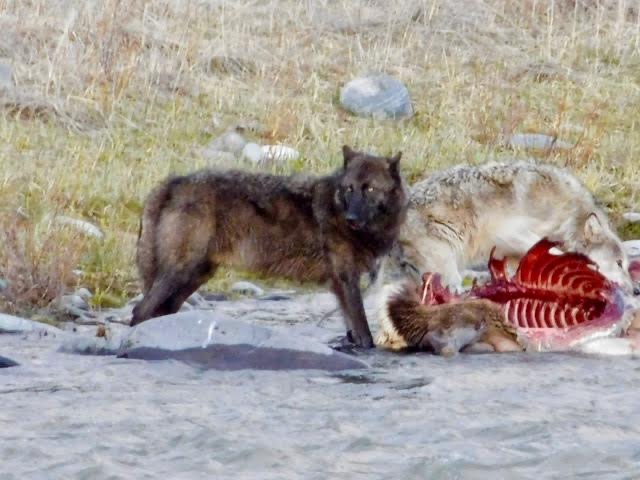Aerial view of Crazy Mountains inspires responsibility, compromise
By Jessianne Castle EBS ENVIRONMENTAL & OUTDOORS EDITOR
LIVINGSTON – From a bird’s-eye view of the Crazy Mountains, jagged, tall and full of snow, it’s remarkable to reflect upon those brave and tenacious souls who climbed the peaks before backpacks, Gore-Tex and ultralight shoes.
Shane Doyle, a Crow Tribal member who lives in Bozeman and works as the program coordinator at the American Indian Institute, knows the stories of his ancestors and continues to eternalize their reverence for the Crazy Mountains northeast of Bozeman.
“You can see this is very rugged terrain … The Crow people don’t come up here to recreate. My uncles were intimidated; they considered it very serious,” he said during a 20-minute flight around the island mountain range on June 27, courtesy of Colorado-based EcoFlight and the Montana Wilderness Association. Instead, Doyle likens the Crazies to a cathedral, a place where his ancestors turned for guidance and support.
Isolated thanks to the wide Yellowstone and Shields river drainages, the Crazies serve as sentinels on the horizon. Spanning roughly 30 miles in length, the still-snowcapped pinnacles soar up more than 11,000 feet. They are known to the Crow as Awaxaawippiia, translated roughly as the Snowcapped, Ominous, or Amazing Mountains.
Seated in the front of a six-seat Cessna 210, Doyle gestured to sites across the landscape that still hold a special place for his people: Fort Parker located up the road near Mission Creek where the Crow Indian Agency was established in 1868; the Elk and Yellow rivers—known on the map as the Yellowstone and Shields rivers, respectively; The Hide Scraper, or Sheep Mountain, which historically served as an important rendezvous site; and Crazy Peak, where many Crow Tribal members say the fate of their people’s survival was sealed.
During the summer of 1860, renowned Crow Chief Plenty Coups, then only 11 years old, followed in the footsteps of his predecessors and ascended the Crazy Mountains in search of knowledge and blessings. Doyle recounts the journey, which began on the east side of the mountains where he tied up his horse, took a purification bath, discarded his clothing and, with nothing but moccasins, made his way up Crazy Peak.
On the third day of fasting and praying, Plenty Coups cut off his index finger as an offering. After this, he received a medicine dream in which bison disappeared into the earth and were replaced by cattle and white men. Considered a prophetic vision, this occurred just a few short years before the Bannack gold rush would bring wagons teeming with people into the area. The Crow interpreted this dream as instructing them to negotiate and be peaceful among the settlers.
“When we say sacred, [and] we don’t use that word a lot, we only use it to describe certain areas,” said Adrian Bird, Jr., of the Crow Tribal Historic Preservation Office. “The Crazies you can see just about anywhere. They’re a refuge … We ran to these areas when we were in trouble and when we needed help. And I’d prefer that we keep it that way.”
The flight and conversations come at a time when the U.S. Forest Service is reconsidering their guiding management plans for the Custer Gallatin National Forest, which includes decisions about motorized and non-motorized travel, and special interest groups recently filed a lawsuit to assert their claims to public access within the Crazies.
According to Doyle and Bird, the Crow want the public and Forest Service to uphold treaty obligations that stretch back to the 1860s and mandate that the government recognize Crow interests in their sacred lands, even if those lands are no longer on the reservation.
“We think it’s fine the way it is,” Doyle said. “Not necessarily with access—there’s a balance that needs to be found. I think it’s real important that we’re able to access these areas, but that doesn’t necessarily mean we need to go in and pave roads or even make trails.
“It’s going to be hard and difficult for people to traverse that territory and that’s the way it should be,” he added. “They’ve never been an easy range to navigate through.”
Bird’s wife, Roberta Bird, who works for the Crow Agency’s Department of Education, compared the Crazies to a church or cemetery.
“You wouldn’t want trash and ATVs and things running in the middle of your church. It’s more about just preserving that sacredness,” she said. “There’s definitely room for talks and compromise.”
Ned and Cindy Zimmerman, landowners in the Shields Valley on the west side of the Crazies, attended the flyover event in order to represent their interest in the issue and learn about ways to work together with the tribes. Recently, the couple made arrangements with the Forest Service to donate easements for a trail that will connect the Porcupine and Ibex ranger stations.
“We’re trying to come up with a solution that allows the public a reasonable amount of access to their land, as well as making it possible for us to continue running livestock,” said Ned, whose family has owned the property in question since 1933.
Following the interview with EBS, the Zimmermans spoke privately with Bird about gaps in understanding and shared responsibility.
“I respect the farmlands,” Bird told me following the conversation, adding that he felt a relief when Zimmerman asked what their role was in keeping the mountains sacred. “I said let’s just work together. Let’s just be truthful. Just let us know our mountain is going to be OK.”












